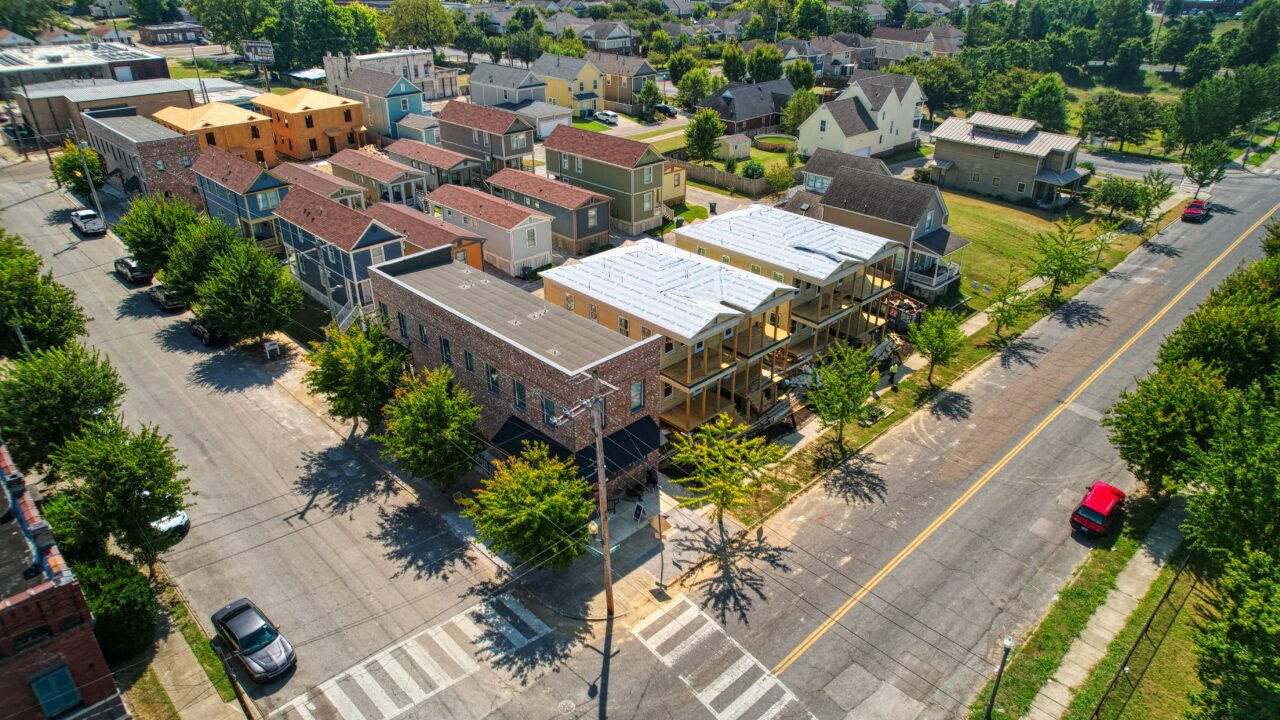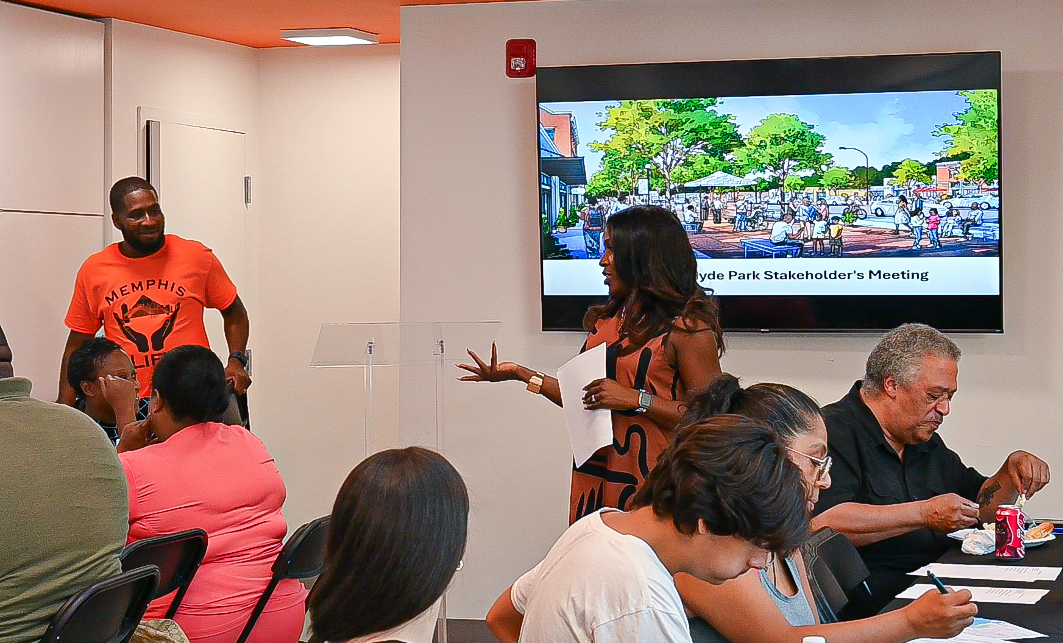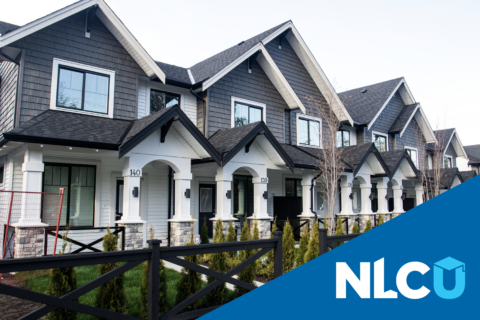Authored by John Zeanah, AICP, Chief of Development and Infrastructure, City of Memphis
Key Takeaways
- Zoning reform is necessary but often not sufficient for increasing housing supply for missing middle housing types. Even after zoning changes, these housing types can remain difficult and expensive to build due to other regulatory hurdles.
- Malone Park Commons served as a key case study for identifying these regulatory gaps, offering insight into the barriers facing missing middle housing development.
- Memphis implemented a series of reforms beyond zoning to make missing middle housing more feasible, including local code amendments, sprinkler reform and utility reclassification.
- These changes introduced greater proportionality in building and life safety standards, aligning regulation with the scale of missing middle housing making it more affordable and viable to develop.
- By removing regulatory barriers, cities can better support missing middle housing, expanding housing options through incremental development.
Cities across the United States are embracing the push for zoning reform to enable more production of housing supply, particularly to unlock more housing types in what has become known as the “missing middle.” Zoning reform is an important step toward this goal, but increasingly planners and local officials are finding that even after zoning updates are made, production of middle-scale housing remains slow. A report from the Center for Building in North America discusses how building codes, fire codes, stormwater rules, utility requirements and more add substantial cost and delay — hurdles that go beyond what zoning regulates and must be addressed if cities want to expand middle-scale housing supply.
Having served as the director of planning and development in Memphis, Tennessee, for over seven years, I saw these challenges firsthand after our city’s comprehensive plan, Memphis 3.0, identified missing middle housing as an opportunity to target redevelopment near key “anchors” throughout our community. No other project in Memphis embodies delivering the missing middle like Malone Park Commons, a 35-unit project in the Uptown neighborhood adjacent to downtown Memphis.
Malone Park Commons, led by developer Andre Jones, is a model of integrating middle-scale housing — or “missing middle” — within a walkable neighborhood. A mix of quadplexes, four-unit live-work buildings and a cottage court, Malone Park Commons became a master class in the invisible barriers challenging middle-scale housing development. It also became a learning lab — for planners, code officials, developers and policymakers alike — not just about regulation, but how communities can envision a different future.
A Modest Idea, an Outsized Response
Malone Park Commons fits neatly on less than one acre, gently transitioning from single-family houses nearby — the essence of filling the “missing middle.” But every time the project’s design crossed the threshold from two units to three, the project triggered code requirements meant for big buildings. For example, cottages could sail through on the residential code (IRC), but the fourplexes were treated like commercial apartment buildings under the International Building Code (IBC).
That means fire sprinklers, backflow preventers, commercial water taps, professionally stamped engineering plans and alarm panels and pull stations. One by one, these costs stacked up, straining the project’s budget and timeline. In some cases, they nearly halted construction altogether.

The primary challenge many missing middle housing types face in building and fire codes is one of proportionality. While these codes impose necessary building and life safety provisions, the IBC’s provisions are often over-scaled for a house-sized building with a handful of units, especially compared to the IRC. As Jones encountered one issue after another intended for larger buildings, Malone Park Commons became an opportunity for planners, code officials, elected representatives and developers to learn from one another on how the missing middle gets built.
Partnership for Reform
Through this partnership of local government and a small developer, Memphis embarked on updates that go beyond zoning. Some of the most notable changes included:
Utility Reclassification: The local water utility had initially treated each fourplex as a commercial building, triggering $3,000–$5,000 backflow devices and higher monthly rates. After HB 2787 passed, the utility revised its policy (PDF). Now, buildings up to four units can qualify for residential service, saving thousands per unit.
Local Code Amendments: In 2021, Memphis adopted a local “Large Home” amendment to the building code, allowing up to six-unit buildings to be reviewed under a modified version of the residential code.
It was not intended to be a silver bullet, but to open the door to more house-scaled multi-unit buildings. When the state fire marshal objected to the local change, local officials joined with Jones to push for change at the state level.

Sprinkler Reform: The original project had hoped to use fire-rated wall separations instead of sprinklers. That’s common in IRC buildings, and safe when designed well. But when the state fire marshal disagreed with the local “Large Home” amendment to the building code, Memphis partnered with Jones and other home builders to advance HB 2787 with the Tennessee legislature in 2024, allowing local governments to permit small residential buildings (up to four units, under 5,000 square feet and no taller than three stories) to be built without sprinkler systems if built with two-hour-rated separations or to use less costly 13D sprinkler systems instead of 13R systems otherwise required.
A New Way to Build
City Councilwoman Michalyn Easter-Thomas represents the Uptown neighborhood where Malone Park Commons was built. Recognizing the vitality the project has brought to the community, Easter-Thomas envisions more like it for other neighborhoods across her North Memphis district.
“This project shows us how thoughtful infill can bring vibrancy to neighborhoods,” Easter-Thomas said. “Malone Park Commons is what our neighborhoods used to look like. We want that back.”
Easter-Thomas is leading a targeted redevelopment plan for a nearby neighborhood in her district called Hyde Park. After attempting to attract a grocery store to Hyde Park, Easter-Thomas has turned her attention to building up housing stock first. Though she is championing a series of zoning reforms that would expand what can be built in Hyde Park, Easter-Thomas is also bringing local officials and developers together to figure out how to make it easier to build on over 200 vacant, publicly-owned lots in the neighborhood.

“Rebuilding neighborhoods like Hyde Park requires everyone in local government working together, not just doing the same things they do now, but thinking differently about how to elevate communities,” said Easter-Thomas. “I’m telling residents of Hyde Park to dream bigger than they ever have for their own neighborhood. For that dream to become real, we need local government thinking bigger too.”
Most missing middle housing is not built by large developers, but by local builders (PDF), trying to create new housing opportunities on modest lots. Zoning reform permits them to build in more places, but many are finding out it may not be buildable. For Memphis, Malone Park Commons put a spotlight on that disconnect. It showed how fire codes, utility classifications and building standards are still stuck in a binary mindset of single-family and everything else.
The next installment of this series will look at each of these standards and provide action steps for planners and local officials to follow that go beyond zoning to help deliver housing.
About the Author
John Zeanah is the Chief of Development and Infrastructure for the City of Memphis, Tennessee. In this role, he leads a cross-functional team of agencies responsible for planning, housing, transportation, public works and community and economic development. Prior to this role, John served as the Director of the Memphis and Shelby County Division of Planning and Development for over seven years. John is also Principal of Interval, LLC, advising local governments on code and permitting reform.











